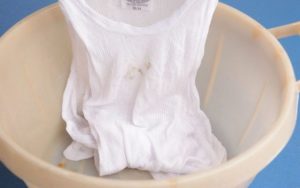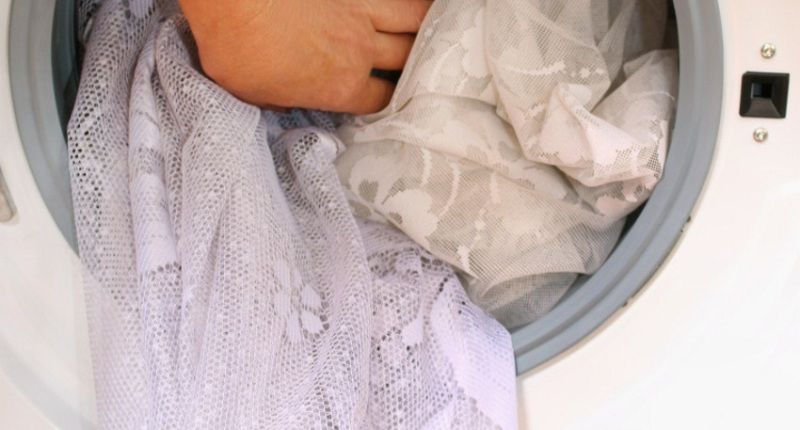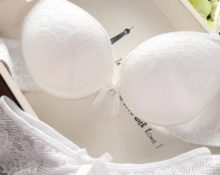 White things are a decoration of the wardrobe, but at the same time they cause a lot of trouble. Favorite perfumes, sweat and even iron leave yellow stains on them.
White things are a decoration of the wardrobe, but at the same time they cause a lot of trouble. Favorite perfumes, sweat and even iron leave yellow stains on them.
Fortunately, this problem can be overcome if you properly care for your clothes.
But washing does not always lead to the desired result. It is necessary to carry out additional procedures. At the same time, it is not necessary to take things to dry cleaning; you can do the work yourself.
Whitening a T-shirt at home
With our help, even a novice housewife can cope with the task.
Stages of returning whiteness
Depending on the degree of contamination and the type of fabric, the work will have to be done in stages.
To do this, you will need the following procedures:
- pre-soaking:
- wash;
- boiling.
Most often, all three stages have to be used if you want to add freshness to linen or cotton products.
Soak
Pre-wetting makes the main wash easier and reduces machine operating time.You cannot do without it in case of contamination with hard-to-remove organic substances: stained with grass, earth, blood, milk, pus.
Important. In order to get rid of particularly stubborn stains, you may even need to repeat the procedure several times.
Soaking Recommendations
- Usually the procedure takes from 1 hour to 5–6.
- Things that are planned to be boiled can be left in water with powder (soda, vinegar) for up to 12 hours.
- After soaking, the laundry is rinsed, preferably twice, and then put into the drum.
Wash

You can remove dirt from clothes either manually or using a machine.
For hand washing, laundry soap is best.
When processing by machine, you should set the device to accelerated mode by selecting the appropriate program: express, fast, baby, delicate (the exact name can be found in the operating instructions).
Boiling
Already clean, dust-free and dirt-free, T-shirts made from natural fabrics just need to be restored to their almost pristine whiteness. The best assistant in this matter is boiling.
You can’t cope without it if, for example, you had to “closely communicate” with a car. As a result, a machine oil stain appeared on the clothes. It is almost impossible to remove it without boiling.
Another argument in favor: baby underwear, even washed in hypoallergenic powders, causes irritation on the baby’s delicate skin. The same applies to adults with allergies.
Important. Items that have been disinfected by boiling in a soap-soda solution do not cause irritation.
Soaking with additional boiling will help reduce the labor intensity of hand washing. Fabrics kept in warm water with the addition of baking soda (2 tbsp.per 10 liters), often no longer require mechanical washing.
The use of various substances for whitening
At different stages of purification, the quality of the treatment can be improved using various substances.
Available means

Baking soda
- To make things shine like the first snow, you will need to dissolve 1 tbsp. l. soda in one liter of water, then pour 1 tsp into the mixture. ammonia. Soaking a white T-shirt in a warm solution for 3-4 hours will remove stains, and subsequent boiling will get rid of unpleasant odors.
Important: soda softens water, removes fungus and mold from clothes and protects household appliances from scale, so it can be safely used during machine washing.
Washing soda (soda ash)
In combination with vinegar, it works well on old marks, but is only suitable for natural fabrics.
The application technology is as follows: soda is poured onto the stain, which is then “quenched” with vinegar.
The paste is carefully rubbed in a circular motion and left to dry. The procedure ends with rinsing in running water.
Advice: Vinegar and soda ash are aggressive substances, when working with which you must protect your hands with rubber gloves.
Mustard

2 tbsp. l. powder per liter of hot water and soaking for several hours will get rid of gray deposits and restore freshness to white products.
However, for items made of delicate fabrics, the solution must first be filtered.
Soap
A proven recipe is laundry soap with potassium permanganate. Suitable for bleaching knitwear, cotton, linen.
The white T-shirt is thoroughly rubbed, then dipped into a basin with potassium permanganate dissolved in hot water and left for several hours. Most likely, you won’t have to start the machine after soaking.
Important: The potassium permanganate solution should be weak and light pink in color.
Stain removers and bleaches

Modern household chemicals designed to restore whiteness are divided into several types.
Chlorine-containing
The most effective products, but they cannot be used for synthetic, woolen and delicate fabrics.
In addition, they are not suitable for use in the washing machine, and the smell of bleach often causes allergies.
Oxygen-containing
These bleaches have recently taken leading positions. They are suitable for all types of fabrics and cope with various stains.
The main disadvantage is the high cost and short shelf life.
Optical
They create visible, not real, whiteness. The task of optical chemistry is to mask contaminants using particles that reflect light from the surface of the product.
Most store-bought washing powders initially contain optical substances, which is necessarily written on the packaging.
Features of bleaching items made from different fabrics
To avoid a surprise in the form of a completely damaged T-shirt, you need to study the tag, which contains both the composition of the fabric and pictograms with recommendations for caring for the product.
Cotton fibers

For things made from natural fabrics - satin, calico, cotton, linen - you can even use aggressive bleaches containing chlorine.
Regular lemon will help to cope with traces of sweat and deodorant. You will need to squeeze out a glass of juice and mix it with a couple of liters of warm water. After two hours, there will be no trace left of the annoying stains.
Knitwear
Soda solution, mustard powder, table vinegar (white) - all these substances have proven themselves in the fight against stains on knitted T-shirts.
Silk
The products are rubbed with laundry soap and soaked for an hour and a half in a solution consisting of hydrogen peroxide, baking soda and ordinary table salt.
Lace
An openwork T-shirt needs careful care.
The juice squeezed from half a lemon is mixed with a tablespoon of table salt. Apply the resulting composition to problem areas, and after half an hour, rinse with warm water.
Synthetics
Artificial fibers are very capricious in the choice of products. Chlorine-containing substances act on them unpredictably; boiling leads to deformation.
One of the home recipes will help: rub sweat stains with an aspirin solution 2 hours before washing. Soap with a whitening effect will also work.
Advice: add a little blue to the rinse water, it will make the T-shirt truly snow-white.
Proper care and timely bleaching will not only rid the T-shirt of stains or return it to its original color, but will also extend its life.



 0
0





